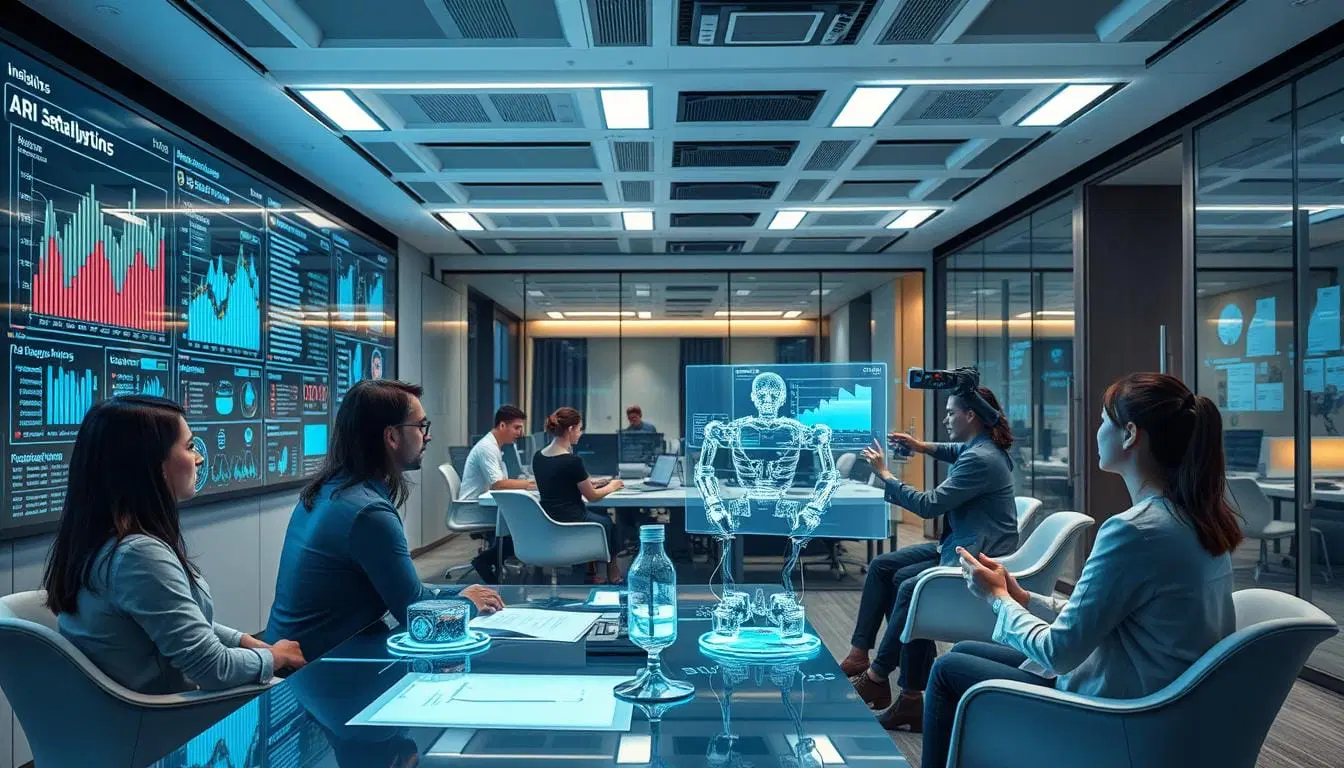Introduction to AI in Organizational Design
Artificial Intelligence (AI) is transforming various sectors, and its potential within organizational design is becoming increasingly significant. Organizational design involves structuring an organization in a way that optimizes its efficiency and effectiveness, aligning resources, roles, and responsibilities with strategic goals. Integrating AI into this process presents unique opportunities and challenges for businesses, reshaping traditional paradigms.
At its core, AI in organizational design refers to the utilization of advanced technologies such as machine learning, data analytics, and automation to streamline operations, enhance decision-making, and improve overall organizational performance. These technologies facilitate a data-driven approach, allowing leaders to make informed decisions based on real-time insights. For example, predictive analytics can assess workforce dynamics, enabling organizations to make timely adjustments to their structures, ultimately fostering a more agile response to market changes.
Moreover, the rise of remote work and digital collaboration tools has triggered a need for organizations to rethink their structural frameworks. AI can aid in identifying the most effective organizational structures by analyzing employee interactions, productivity patterns, and project outcomes. This adaptive capability is crucial as businesses navigate an increasingly complex landscape where traditional hierarchies may not suffice.
Despite the promising potential of AI in enhancing organizational design, businesses face several challenges during its integration. Key among these is the need for a cultural shift within the organization to embrace technological changes and invest in employee training. Additionally, ethical considerations surrounding AI deployment, such as data privacy and algorithmic bias, demand careful attention to ensure that the integration process does not adversely affect the workforce or organizational integrity.
As organizations explore the transformative possibilities of AI, embracing its principles in design offers a path toward enhanced efficiency and responsiveness, all while addressing the unique challenges that accompany this technological evolution.
Benefits of Integrating AI into Organizational Design
The integration of artificial intelligence (AI) into organizational design presents numerous advantages that significantly enhance operational capabilities. One of the primary benefits is improved decision-making. Organizations can leverage AI tools that analyze vast datasets to uncover actionable insights. By utilizing advanced algorithms, AI systems assist managers in making informed decisions based on predictive analytics, ultimately leading to better strategic outcomes.
Enhanced efficiency is another critical benefit of incorporating AI into organizational structures. AI-driven automation streamlines repetitive tasks, reducing the time and effort required from employees and allowing them to focus on higher-value work. This increased productivity not only boosts employee morale but also contributes to overall organizational effectiveness. An example of this can be seen in companies using AI to automate customer service inquiries, drastically reducing response times and improving customer satisfaction.
The ability to predict and respond to market changes faster than competitors is a significant advantage of AI in organizational design. AI systems can analyze market trends in real time, enabling organizations to adapt swiftly to evolving consumer demands. This adaptability fosters innovation, as organizations can swiftly pivot their strategies based on insights gleaned from AI tools.
Furthermore, AI enhances workforce management by optimizing talent acquisition, retention, and development processes. By assessing employee performance data and predicting future staffing needs, organizations can create personalized employee experiences that drive engagement and retention. Organizations like IBM have successfully implemented AI in their human resources departments to identify potential leaders within their workforce, improving succession planning and overall talent management.
In conclusion, the integration of AI into organizational design not only promotes improved decision-making and efficiency, but it also empowers organizations to innovate and respond to market dynamics effectively. Through AI, companies are well-positioned to nurture talent and enhance employee experiences, solidifying their competitive advantage in an increasingly dynamic business environment.
Challenges and Considerations in Implementing AI
The implementation of artificial intelligence (AI) within organizational design processes presents several challenges and ethical considerations that must be carefully evaluated. One significant concern is data privacy. Organizations are often required to utilize vast amounts of data to train AI systems effectively. However, safeguarding this data while adhering to privacy regulations, such as GDPR, can be complex and daunting. Organizations must navigate the intricate landscape of data usage to ensure they do not compromise sensitive information, thereby fostering trust amongst stakeholders.
Another challenge revolves around resistance to change within teams. Employees may feel apprehensive about the introduction of AI technologies, fearing job displacement or a shift in their roles. This resistance can hinder the successful integration of AI into organizational structures, as it may lead to decreased morale and productivity. Therefore, organizations should endeavor to create a culture that emphasizes adaptability and innovation. Clear communication regarding the benefits and goals of AI implementation is essential to mitigate concerns and promote acceptance among team members.
Furthermore, the necessity for upskilling employees to collaborate effectively with AI tools cannot be overlooked. The evolution of job roles associated with AI necessitates that organizations invest in training programs to equip their workforce with the requisite skills. Investing in continuous learning not only enhances employees’ capabilities but also ensures that they can work synergistically with AI systems, thereby maximizing productivity and efficiency.
Transparency in AI applications is critical. Organizations need to establish clear frameworks that govern the use of AI, ensuring that all stakeholders comprehend how and why AI systems are deployed. These frameworks should address not only operational processes but also ethical considerations, such as bias in AI algorithms, to promote fairness and accountability. By fostering a transparent approach, organizations can establish trust and facilitate a smoother transition towards AI-enhanced organizational design.
Future Trends in AI and Organizational Design
The integration of artificial intelligence (AI) into organizational design is poised to evolve significantly in the coming years. As AI technologies advance, organizations will increasingly leverage these innovations to optimize their structures and operations. One of the most notable trends anticipated is the development of highly adaptive organizational frameworks. These frameworks will utilize AI to respond to changing market conditions and internal dynamics in real-time, ensuring greater agility and resilience.
Moreover, as machine learning algorithms become more sophisticated, organizations will rely on AI to analyze vast amounts of data for strategic decision-making. This capability will allow leaders to identify emerging trends and potential challenges earlier, facilitating preemptive actions that enhance organizational efficiency. Consequently, the role of data analysts is expected to evolve, transforming them into interpreters of AI insights rather than mere data gatherers.
Furthermore, the relationship between human workers and AI systems will become increasingly collaborative. Research suggests that organizations will adopt hybrid models, where AI assists human employees in decision-making processes and routine tasks. This shift will likely lead to a reevaluation of job roles and responsibilities aiming to leverage the strengths of both AI and human skills. For instance, employees may focus more on tasks that require creativity, interpersonal skills, and critical thinking, whereas AI handles data-driven activities.
Additionally, the implications of AI utilization on workplace culture are significant. Companies will need to promote an inclusive environment, ensuring that all employees are equipped with the necessary skills to work alongside AI technologies. Upskilling and reskilling initiatives will likely become standard practice, fostering a culture of continuous learning. Overall, as organizations embrace AI, a more dynamic and collaborative workplace structure may emerge, laying the groundwork for innovative practices that redefine traditional organizational design.









